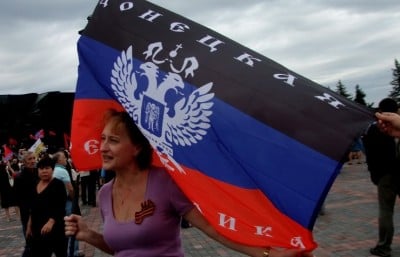Law on Donbass’ Special Status Comes into Force
Text of the document was published in the parliament’s official newspaper Golos Ukrainy (Voice of Ukraine)

Ukraine’s law on a special status of Donbass (Donetsk and Luhansk regions) came into force on Saturday as it was published in the parliament’s official newspaper Golos Ukrainy (Voice of Ukraine).
On October 16, the presidential website read Ukrainian President Pyotr Poroshenko has signed a law on a special status for Donbass.
“Ukrainian President Pyotr Poroshenko has signed the law ‘On special procedure of local self-government in separate districts of the Donetsk and Luhansk regions’,” the report said.
“Document No. 1680-VII defines a provisional procedure of organizing local self-rule and operation of local power bodies in separate districts of the Donetsk and Luhansk regions,” it said.
“The key goal is to create conditions to normalize the situation as soon as possible, restore law and order, constitutional rights and freedoms of citizens, create conditions for residents to return to forcibly left permanent residence places, restore vital activities in inhabited localities and develop the territories. The rights and legitimate interests of legal entities are also restored,” the report said.
The special status is introduced for three years.
“Governance in the cities, towns and villages is carried out by territorial communities through local government bodies under the Constitution and the laws of Ukraine. Powers of local councils and officials elected in the course of the extraordinary elections scheduled by the Verkhovna Rada [Ukraine’s parliament] will not be terminated early. Extraordinary local elections in these districts are scheduled for December 7, 2014,”
the report said.
“The document also specifies the way of coordinating the activity between local government of these districts and central and executive government,” it said.
“Moreover, the law stipulates mechanisms of state support of socio-economic development of these districts through the introduction of the regime of business and investment activity aimed at restoration of industrial objects, infrastructure, housing facilities, reorientation of industrial capacity, creation of new jobs,”
the report said.
“Under the law, the state guarantees prevention of criminal prosecution, criminal and administrative liability and punishment of persons-participants of the events in these districts. To protect public order, local government will create people’s police units. The law shall enter into force on the day of its publication,”
it said.
According to the UN, some 3,500 people have been killed and hundreds of thousands have fled Ukraine’s war-torn southeast as a result of clashes between Ukrainian troops and local militias in the Donetsk and Luhansk regions during Kiev’s military operation conducted since mid-April to regain control over the breakaway territories, which call themselves the Donetsk and Luhansk People’s republics (DPR and LPR).
The parties to the Ukrainian conflict agreed on cessation of fire and exchange of prisoners during talks mediated by the Organization for Security and Cooperation in Europe (OSCE) on September 5 in Belarusian capital Minsk. The ceasefire took effect the same day but reports said it has occasionally been violated.
Ukraine’s parliament on September 16 granted a special self-rule status to certain districts in the Donetsk and Lugansk regions for three years. The Verkhovna Rada also passed a law on amnesty for participants in combat activities in Ukraine’s troubled eastern regions.
On September 20, in Minsk, the Trilateral Contact Group on Ukraine comprising representatives of Ukraine, Russia and the OSCE adopted a memorandum outlining the parameters for the implementation of commitments on the ceasefire in Ukraine laid down in the Minsk Protocol of September 5.
The document contains nine points, including in particular a ban on the use of all armaments and withdrawal of weapons with the calibres of over 100 millimetres to a distance of 15 kilometres from the contact line from each side. The OSCE was tasked with controlling the implementation of memorandum provisions.

